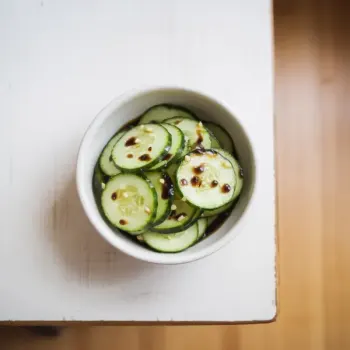
 9 minutes
9 minutesPerfectly poached eggs with tender whites and slightly runny yolks, seasoned with salt and pepper.


teaspoons
tablespoons
each
to taste
1. Prepare the Water
Fill a 12-inch nonstick skillet with water, adding a teaspoon of salt and two tablespoons of vinegar. The vinegar helps the egg whites set quickly, preventing them from feathering and ensuring a neat poached egg. The water should come nearly to the rim of the skillet. Bring the water to a boil over high heat.
2. Prepare the Eggs
While waiting for the water to boil, crack four large eggs into two teacups, placing two eggs in each cup. The teacups make it easy to gently lower and tip the eggs into the skillet without breaking the yolks.
3. Poach the Eggs
Once the water is boiling, lower the teacups into the water and tip the eggs in gently. Immediately cover the skillet with a lid and remove it from the heat. Let the eggs sit in the hot water for about four minutes. This method uses residual heat to cook the eggs gently, resulting in tender whites and slightly runny yolks. If you prefer firmer yolks, let them sit for an additional 30 to 60 seconds.
4. Drain and Season
Using a slotted spoon, carefully lift the poached eggs from the skillet and place them on a paper towel-lined plate to drain any excess water. Season the eggs with salt and pepper to taste.
Use the freshest eggs possible, as they have firmer whites that hold together better during poaching. For less fresh eggs, a dash of vinegar can help coagulate the whites.
Maintain water at a gentle simmer, approximately 180-190°F (82-88°C), to allow the egg to cook evenly without the whites feathering.
Poach the egg for 3-4 minutes for a runny yolk, or 4-5 minutes for a firmer yolk, using a timer for consistency.
Create a gentle whirlpool before adding the egg to help the white wrap around the yolk for a better shape. Slide the egg in from a small bowl or ramekin.
Use a slotted spoon to remove the egg, allowing excess water to drain and prevent sogginess on the serving dish.




Comments (0)